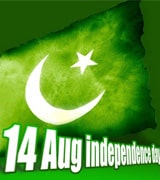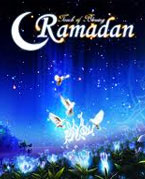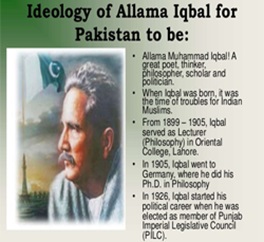Before the time of Prophet Mohammed (PBUH), two days of celebrations were traditionally held in Arabia in which games, dancing and gambling were highly practiced. After the spread of Islam, the Prophet (PBUH) declared:
"Allah has replaced your two days of games with two superior days",
meaning the days of Eid. Prophet Mohammed dressed gracefully in a unique way at Eid and started to greet families residing along one lane and then return by another path, without missing anyone on the whole route he took.
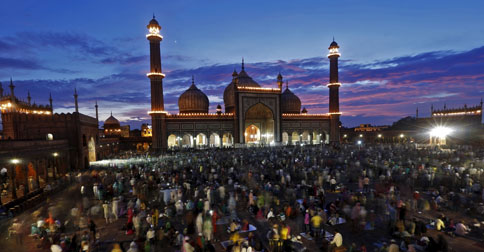
Prophet Muhammad (PBUH) ate a few dates before leaving for 'Eid ul Fitr. This Sunnah led to the tradition of offering sweets at Eid. In the time of Prophet Muhammad (PBUH) everybody even women and children would participate in the 'Eid prayer. On Eid day our beloved Prophet (PBUH) greeted children happily stroking their heads, telling them jokes and giving them gifts.
Since the declaration of Prophet's two days of festivities ,the whole Islamic world celebrate two Eids with great joy .Eid ul Fitr as we all know is celebrated across the globe on first of shawwal to Thanks Allah for granting and completing the holy month of Ramadan.
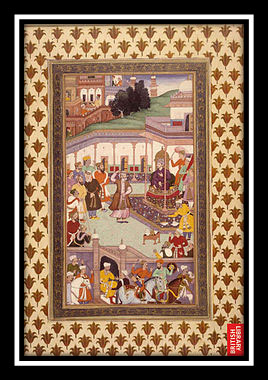
Across the globe Eid is celebrated with many different and unique traditions .Specific meals are cooked on this day of joy and Muslims meet each other to enjoy the celebrations. In ancient times also Eid was celebrated with great honor .Following are some examples of ancient Eid celebrations during powerful Islamic dynasties.
Eid during Mughal empire Shahjahan's reign:
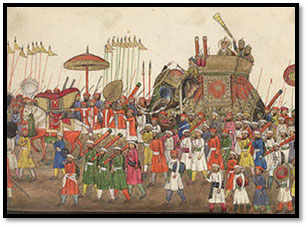
The Mughal courtier Hamiduddin Lahori had beautifully described the Eid of 1628 during the reign of Emperor Shah Jahan. On Ramzan 30, 1037 (June 3, 1628), with the appearance of the crescent moon the joy-bands were played. The next morning (Eid day), the princes, courtiers and other officials gathered in the audience hall to greet the emperor. The houses and the bazaars are all decorated with several shades of brocades. Everybody was dressed up in gay costumes. The sounds of trumpets and bugles declared the entry of the emperor heading towards the Eidgah .During the journey coins of gold are showered among the populace.
Eid in Ottoman Empire:
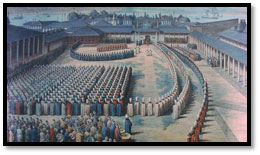
In Ottoman Empire, the original official regulation regarding the Eid ceremonies was established during the reign of Sultan Mehmet II the Conqueror. Eid ceremonies were considered as One of the first laws legislated at the Topkapi Palace upon conquer of Istanbul. Eid ceremonies were called "the "Secreteriat of Protokol". The Eid celebrations were officially formulated with legislatures. From the beginning till the end of every single thing was organized in advanced and executed in line with the hierarchye court, eid celebrations were initiated at the Eve's Council. Following the Eid prayer, the council sergeants stood in their ceremonial costumes by the Council Hall (Kubbealti), with grooms of the court standing right behind them. The Sultan's embellished horse waited in the wings. The Sultan sat on the Eve's Throne before the prayers. Later "birun" (high state officials outside the court) greeted him and then "Enderun" (special school) officials and janissary officers, offered precious gifts to sultan. Once these rituals are over, the Sultan rode his horse around the Court Gardens (Hasbahçe), visit the kiosks to relax, and view the athletic games like wrestling and tug of war.
Egyptian Kahk on Eid-ul-Fitr:
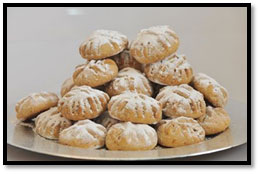
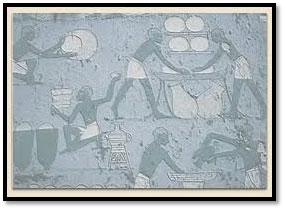
Eid was also celebrated with great joy in ancient Egypt. Ancient Egyptians prepare 'Kahk' as a traditional dessert of Eid al-Fitr. It is a shortbread biscuit covered with sugar and stuffed with dates, walnuts, or 'agameya (Turkish delight).The dessert was so admired that an Egyptian poet Fouad Haddad wrote: "Oh kahk, master of generosity ... we will never stop making you." This delectable treat dates back to the Paranoiac era. The Pharaonic people are found portrayed making Kahk on the walls of the Pharaonic temples of Thebes and Memphis. Ancient Egyptians mold Kahk into beautiful geometrical shapes and then the image of the ancient sun goddess Athon was added to the surface of the biscuit .Currently; Kahk is circular and is often soaked with powdered sugar. Various Middle Eastern varieties are available in today's Kahk.
USEFUL LINKS:
The History of Eid-ul-Fitr
https://www.theholidayspot.com/eid_ul_fitr/eid_ul_fitr_history.htm
Farah Hedayat








.gif)




















